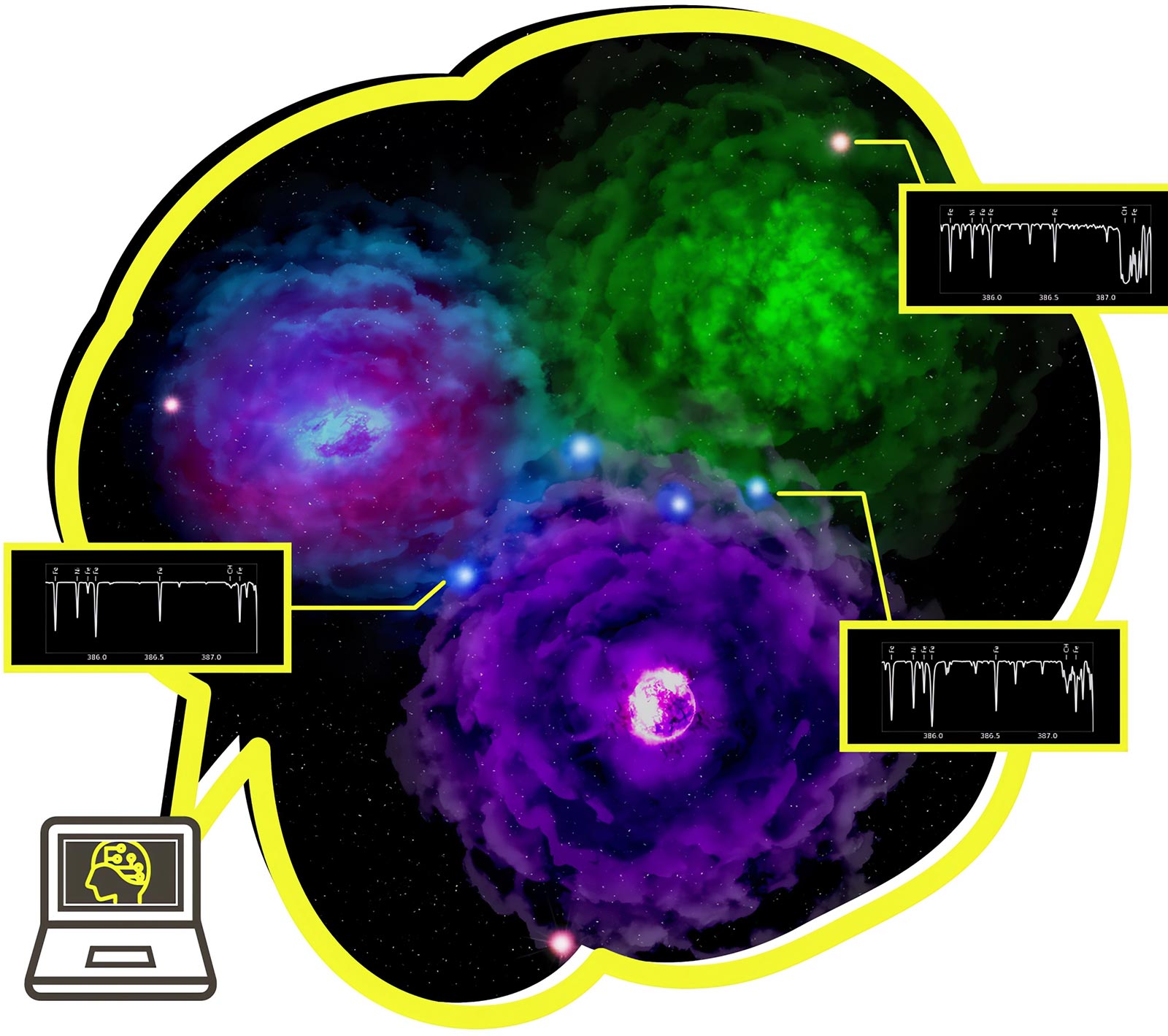Using artificial intelligence, an international team analyzed the chemical composition of extremely metal-poor stars, finding that the first stars in the Universe were likely born in groups rather than individually. This method will be applied to future observations to better understand the early Universe.

Ejecta from the first supernovae (cyan, green, and purple objects surrounded by clouds of ejected material) enrich the primordial hydrogen and helium gas with heavy elements. If the first stars were born as multiple stellar systems, rather than as isolated single stars, elements ejected by different supernovae would be mixed together and incorporated into the next generation of stars. The characteristic chemical abundances in such a mechanism are preserved in the atmospheres of long-lived stars. The team invented a machine learning algorithm to distinguish between the observed stars (shown in red in the diagram) formed out of the ejecta of a single supernova and stars (shown in blue in the diagram) formed out of ejecta from multiple supernovae, based on measured elemental abundances from the spectra of the stars. Credit: Kavli IPMU
An international team has used artificial intelligence to analyze the chemical abundances of old stars and found indications that the very first stars in the Universe were born in groups rather than as isolated single stars.
After the Big Bang, the only elements in the Universe where hydrogen, helium, and lithium. Most of the other elements making up the world we see around us were produced by nuclear reactions in stars. Some elements are formed by nuclear fusion at the core of a star, and others form in the explosive supernova death of a star. Supernovae also play an important role in scattering the elements created by stars, so that they can be incorporated into the next generation of stars, planets, and possibly even living creatures.
The first generation of stars, the first to produce elements heavier than lithium, are of particular interest. But first-generation stars are difficult to study because none have ever been observed directly. It is thought that they have all already exploded as supernovae. Instead, researchers try to draw inferences about first-generation stars by studying the chemical signature the first generation of supernovae imprinted on the next generation of stars. Based on their composition, extremely metal-poor stars are believed to be stars formed after the first round of supernovae. Extremely metal-poor stars are rare, but enough have been found now to be analyzed as a group.
In this study, a team including members from the University of Tokyo/Kavli IPMU, National Astronomical Observatory of Japan, and University of Hertfordshire took a novel approach of using artificial intelligence to interpret elemental abundances in over 450 extremely metal-poor stars observed by telescopes including the Subaru Telescope. They found that 68% of the observed extremely metal-poor stars have a chemical fingerprint that is consistent with enrichment by multiple previous supernovae.
In order for the ejecta from multiple previous supernovae to get mixed together in a single star, the supernovae must have occurred in close proximity. This means that in many cases first-generation stars must have formed together in clusters rather than as isolated stars. This offers the first quantitative constraint based on observations for the multiplicity of the first stars.
Now the team hopes to apply this method to Big Data from current and future observing programs, such as the data expected from the Prime Focus Spectrograph on the Subaru Telescope.
These results appeared as Hartwig et al. “Machine Learning Detects Multiplicity of the First Stars in Stellar Archaeology Data” in The Astrophysical Journal on March 22, 2023.
Source: Scitechdaily








